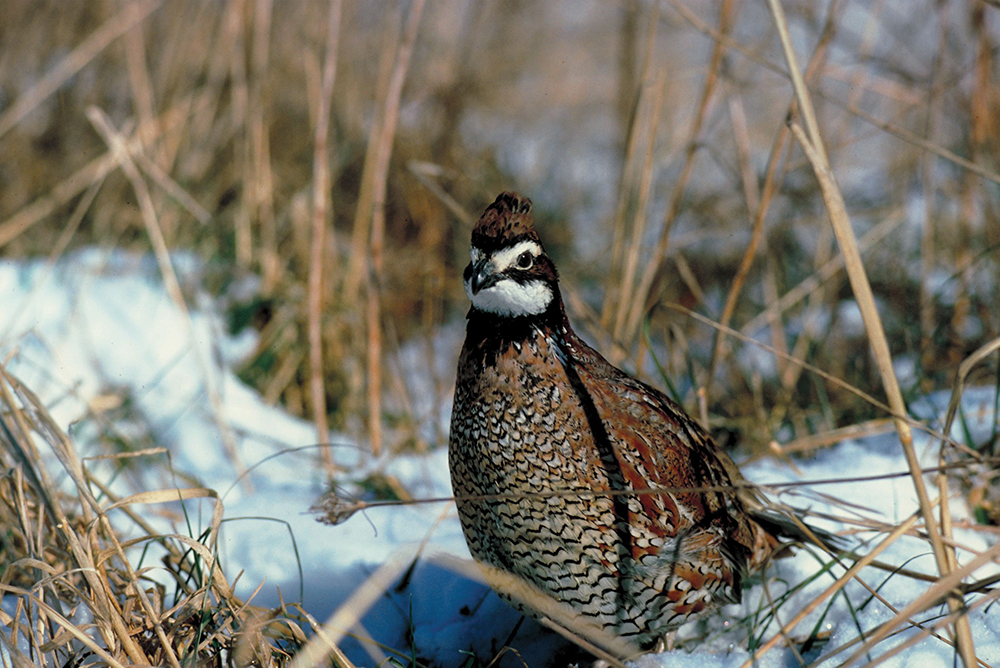
Either the male or the female bobwhite may incubate eggs and raise the brood. Bobwhite clutch size averages 12 to 14 eggs. The nest is lined with dead vegetation and concealed by forbs and grasses. After courtship in the spring, quail build nests by scratching a depression in the soil. Quail often nest along fencerows and the edges of farm fields, but more extensive nesting cover can be created and maintained by frequent (every 1 to 3 years) soil disturbance to promote forbs, including goldenrod, dogfennel, ragweed, and horseweed. Nesting cover must have forbs or grasses with patches of shrubs nearby.

Areas with dense ground cover or litter will not be used by quail. Quail forage by searching the ground for seeds, fruits, and animal matter. Cover typically is the limiting component of habitat on most properties, so it must be emphasized in efforts to create and maintain quail habitat.įoraging cover typically is characterized by bare ground with an “umbrella-like” cover of forbs overhead. Eventually though, woody plants grow tall and shade out herbaceous plants, eliminating habitat for quail.Ī mixture of shrubs, including blackberry, and areas with grasses and forbs provides year round cover for bobwhite. Quail most often use these areas for 3 to 4 years after the disturbances. An abundance of quail can be found in areas of early successional vegetation such as that present after tillage, burning, or timber harvest. Bobwhite seek out areas of lush herbaceous groundcover (grasses and forbs) in the spring, though shrubs and other woody understory plants remain critical as places to escape from predators. Dense patches of shrubs provide critical places for birds to escape from predators and find shelter from harsh weather in the winter. Quail habitat requirements change seasonally. In the early spring, coveys break up and individual birds mate, nest, and raise broods through the summer. Quail are social birds that gather in groups called "coveys.” From fall through spring, as many as 10 to 30 birds may form a covey in which they forage and roost closely together. Quail are shrubland birds and their habitat is composed of grass, forb, and shrub cover.

Northern bobwhite (aka bobwhite quail) is ground-dwelling bird that once was an abundant and commonly hunted game bird. Habitat Requirements Skip to Habitat Requirements


 0 kommentar(er)
0 kommentar(er)
